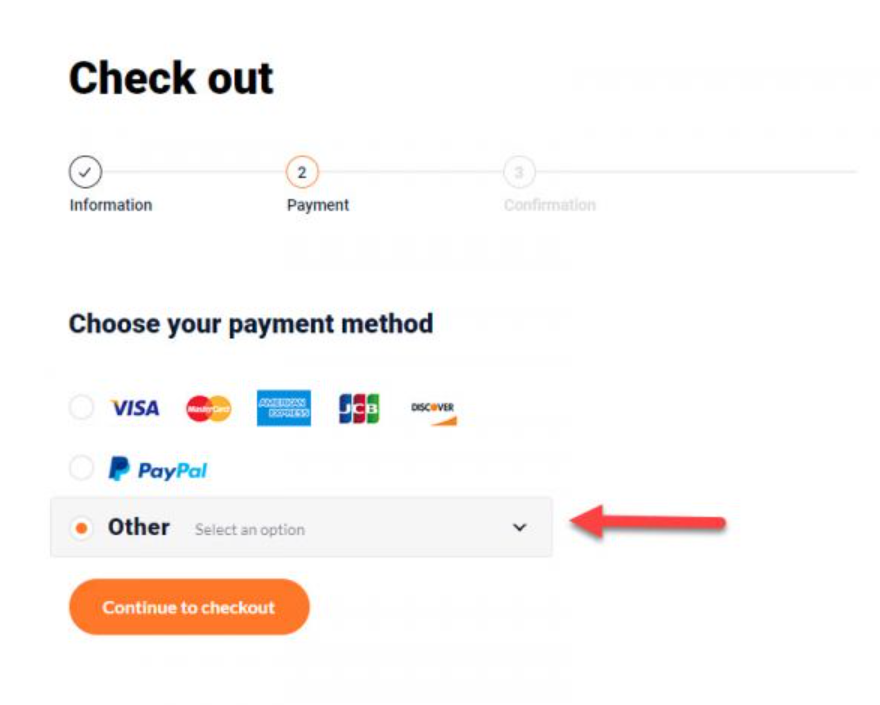Your cart page is where customers review their entire purchase. It’s the online version of a shopping cart and where they confirm their purchase before moving on to payment. Having a well-designed cart page is important for making customers feel comfortable about purchasing and reducing cart abandonment.
But even though a customer reaches the cart page, there’s still a chance to lose the sale. So it’s important to design a cart page that serves their needs and encourages them to move on to the checkout page.
Understanding the Importance of a Seamless Checkout Experience
A seamless checkout experience refers to a shopping scenario wherein the buyers can swiftly and painlessly maneuver from the point of selecting products to the point of making payment, navigating intuitive interfaces, clear instructions, and minimal obstructions. An effortless checkout process not only promotes user satisfaction but also significantly enhances the likelihood of converting shopper interest into successful sales.
The first step to offering a seamless checkout experience begins with recognising potential areas of friction. It is important to identify and rectify elements that might slow down or complicate the checkout process. Factors such as the loading speed of the checkout page, the variety and accessibility of payment options, the clarity of pricing, and concerns about the security of transactions can massively influence the customer’s journey. Furthermore, the availability of assistance, through a live chat, for instance, can also contribute to a smoother checkout. The checkout process in e-commerce platforms must be meticulously designed, keeping in mind the importance of convenience, speed, simplicity, and trust. The ultimate goal is to guide the customers through a startlingly simple journey, thereby encouraging them not only to complete their purchase but also to return for more in the future.
Recognising Common Friction Points in Online Checkout
For online businesses, the checkout process plays a crucial role in achieving a seamless customer shopping experience. Many times, this is where potential customers can turn into lost sales, largely due to a range of friction points in the checkout process. Discerning these friction points is not just about monitoring customer drop-offs, but involves delving into the complexities of checkout processes with a keen focus on identifying areas of improvement.
To initiate, friction points refer to aspects that can deter a customer from completing an online purchase — these can be anything from confusing navigation to mandatory account creation. Interestingly, a common friction point is a lack of transparency in pricing; when shipping or additional costs suddenly appear at checkout, customers often leave.
Another issue is the absence of users’ preferred payment method, which can lead to immediate cart abandonment. Security concerns can also act as a friction point, especially if customers do not perceive the payment gateway as trustworthy. To create a frictionless checkout, it’s important for businesses to streamline each of these aspects, ensuring a clear, transparent, and secure process.
The Role of User Interface in Streamlining Checkout
Understanding customer behaviour and preferences is pivotal to designing an efficient UI for checkout. The process should be linear, with clear instructions, minimal steps, and easy navigation to avoid confusion.
User interface plays an instrumental role in the overall checkout experience and is directly linked to customer satisfaction, loyalty, and business growth.

Why Abandoned Carts are a Major Concern for E-commerce??
Abandoned carts signify potential sales that unfortunately didn’t cross the finish line. Every instance is a loss of revenue and, more importantly, an indication of a possible flaw in the online shopping process.
When a customer leaves items in their cart without completing the purchase, there is an unseen cost attributed to a missed opportunity for long-term customer relationship building. It’s hence crucial to understand this issue, recognise its causes, and take calculated steps to mitigate it.
In this sense, the first step helpfully involves a thorough audit of the existing checkout process. Focus on identifying potential friction points that can discourage a shopper to proceed. Having identified the obstacles, retailers can then objectively strategize plans to counter them. Remember, the goal is not just to comfort customers but to reassure them through the entire purchasing journey. Encourage progression, not regression.
How to Improve User Experience During Checkout: A Step-by-Step Guide
1. Simplify the User Interface
The first step in optimising your checkout process is to simplify the user interface. Make sure your checkout page is clean, intuitive, and easy to navigate. Remove any distractions, unnecessary fields, or clutter that might confuse or frustrate your customers. Keep the design consistent with the rest of your website to maintain a cohesive user experience. E-commerce retailers perceive the principle of “less is more” but, what does this mean? To begin, understanding the customer’s perspective is crucial. Why should a customer fill out exhaustive forms when most of the information is not quintessential for the transaction? Streamlining forms and only asking for vital information reduces friction and saves time. Moreover, integrating features like auto-fill and save options enhance customer engagement and convenience, further smoothing the checkout journey.

2. Implement a Progress Indicator
Customers appreciate knowing how far they are in the checkout process. Implement a progress indicator that clearly shows the steps they need to complete, such as “Cart,” “Shipping,” “Payment,” and “Review.” This transparency reassures customers and encourages them to continue.
3. Offer Guest Checkout
Guest checkout allows users to make a purchase without creating an account or storing any personal data on the website. This method is rapidly gaining traction due to the convenience and speed it offers, especially for first-time customers who may be hesitant to immediately commit to creating an account.
Forcing customers to create an account can be a significant barrier to conversion.
4. Provide Multiple Payment Options
In an increasingly digital world, online shopping is becoming the new norm for consumers worldwide. In this context, the ability to offer diverse, flexible, and secure payment options serves a critical role in ensuring a successful e-commerce checkout. Therefore, it is undeniable that payment options are a crucial part of the overall online shopping experience. They significantly influence the consumer’s decision to complete a purchase, directly impacting an online venture’s bottom line and its reputation.
Online businesses need to work diligently to offer an array of payment options catering to the varied preferences of their customer base. For instance, while some customers prefer traditional credit and debit transactions, others may lean more towards modern payment solutions like PayPal, Apple Pay, Google Pay and other digital wallets. It is no longer enough to merely provide one or two payment methods.
Ensure that your payment gateway is secure and PCI compliant to build trust with your customers.

5. Display Trust Signals
A significant portion of online shoppers is apprehensive about sharing their sensitive information, such as credit card details and personal data, over the internet. The fear of potential data breaches or unauthorised access to their private information often discourages them from completing an online transaction impacting E-commerce businesses significantly. This scenario underscores the critical role of maintaining robust security measures, particularly at the checkout process, which is crucial to fostering customer trust, assurance, and subsequently, sales conversion.
Display trust signals such as security badges, SSL certificates, and customer reviews to reassure customers that their personal and financial information is safe.
The inclusion of encryption technologies such as Secure Sockets Layer can help protect private data from potential malware or cyber threats. Similarly, adherence to Payment Card Industry Data Security Standard (PCI DSS) is a must to ensure the secure handling of credit card information. It fortifies checkout security by minimising the risk of data breaches and building a trustworthy environment.
6. Implement Mobile Optimisation
The mobile checkout process requires meticulous crafting to ensure simplicity, ease of navigation, legibility, and speedy completion. Irrelevant fields that pose potential friction points should be removed and essential fields should be optimised for auto-population to save shoppers’ time. Reducing the number of keystrokes can significantly streamline the checkout process and reduce cart abandonment.
Ensure your checkout process is fully responsive and optimised for mobile users. Test it extensively on various devices and screen sizes to guarantee a seamless experience.

7. Offer Real-Time Shipping Quotes
Transparent pricing is a pivotal factor in creating a seamless checkout experience for online retailers. The price presented to shoppers should encompass every cost associated with their purchase.
Provide customers with real-time shipping quotes based on their location and chosen shipping method. Concealing charges until the final stages of transaction often leads to shopping cart abandonment. Clear and concise information enables customers to make informed decisions, enhances their shopping experience, and significantly contributes to a higher checkout completion rate.
8. Use High-Quality Images and Descriptions
Product images and descriptions should be clear, high-quality, and informative. This helps customers make informed purchase decisions and reduces the likelihood of returns.
9. Enable Cart Editing
Allow customers to easily edit their cart contents during the checkout process. This includes updating quantities, removing items, or applying discount codes. A flexible cart editing feature prevents frustration and cart abandonment.

10. Abandoned Cart Recovery
Implement an abandoned cart recovery strategy to re-engage customers who left without completing their purchase. Send reminder emails, offer incentives, or provide assistance to encourage them to return and finalise the transaction.
The Impact of Page Loading Speed on Checkout Completion
It’s common knowledge that page loading speed can greatly influence user experience, SEO ranking, and overall website performance, but its impact on the e-commerce checkout process is often overlooked.
It’s crucial to note that shoppers can easily close a tab and move onto a competitor’s site if the checkout process gets delayed by even a few seconds.
When a customer experiences slow page loading during their virtual shopping experience, it’s akin to encountering long queues or disorganised checkouts in a brick-and-mortar store. Hence, optimising page load speed propels not only improved user experience but also enhances the checkout completion rates.
The Influence of Return Policies on Checkout Success
Having an effective return policy can significantly impact the overall checkout success. An easy to understand and favorable return policy, which offers benefits like free returns or extended return periods, not only adds to customer trust but also encourages shopper’s journey towards securing the purchase.
Incorporating customer-friendly language, straightforward return methods, and multiple return options can significantly reduce the barriers to purchase.
Implementing Live Chat Support During Checkout
As the expansion of digital trade skyrockets, E-commerce businesses are turning to creative solutions to enhance customer experience. One such solution is the implementation of live chat support during the checkout process. This innovative approach promises to solve real-time customer demands, inquiries and problems that otherwise might lead to cart abandonment. With customer service agents readily available to assist, potential buyers are guided towards finalising transactions, thus increasing conversion rates for E-commerce businesses.
This feature, if implemented correctly, has the power to simplify the checkout process and bolster customer trust in the service or product. Furthermore, live chat support can also serve as a platform for receiving immediate customer feedback, which can be invaluable in enhancing shopping experiences and boosting customer retention rates.

The Power of Personalisation in E-commerce Checkout
Embracing personalisation in the sphere of e-commerce is no longer a luxury, but a fundamental business strategy. Recent studies indicate that personalised checkout experiences can enhance customer satisfaction, foster brand loyalty, and stimulate revenue growth.
Utilising machine learning algorithms, an e-commerce site can monitor and analyse a customer’s shopping behavior and preferences. This information is then used to modify the checkout experience, providing individualised product suggestions based on previous purchases, preferred products, or frequent searches. Additionally, offering preferred payment methods and delivery options based on past orders can also lead to a tailored checkout experience. Through these targeted endeavors, businesses can foster increased customer satisfaction and loyalty, whilst ratcheting up their return on investment.
Monitoring and Improving Checkout Performance: A Continuous Process
By optimising checkout pages, it is plausible to reduce the infamous cart abandonment rate. Furthermore, by utilising technologies such as AI, businesses can leverage customer data to offer personalised checkout experiences. These actions, taking place within a constant feedback loop of analysis and enhancement, better the odds of achieving and maintaining a high-performing checkout process.
- The first step in monitoring and improving checkout performance is understanding the key metrics associated with this process. These include throughput and latency, average order value, total checkout time and its impact on the overall conversion rate. By recognising these indicators, businesses can gain a clearer picture of how their checkout process is performing.
- Once these metrics are understood, businesses can then experiment with different strategies to optimise their checkout pages. This could involve making changes to the layout or design of the page, adjusting pricing structures or offering additional payment options.
- Testing is an essential part of this continuous improvement cycle. Businesses should regularly test their checkout process under various conditions to identify any potential issues or bottlenecks that may be impacting performance.
- After testing, necessary adjustments should be made based on the results obtained. This iterative approach allows for constant refinement and improvement of the checkout process.
- Another strategy involves leveraging technologies like AI to personalise the customer’s shopping experience at check-out stage using data from previous interactions with your business; enhancing user engagement while increasing chances for successful transactions.

In conclusion, monitoring and improving e-commerce website’s check-out performance isn’t just a one-time task but rather an ongoing cyclic process involving understanding key metrics, experimenting with optimisation strategies, regular testing & making required adjustments along with leveraging advanced technology tools like AI for personalisation purposes; all aimed towards creating seamless shopping experiences leading ultimately to higher conversions rates & business growth.

